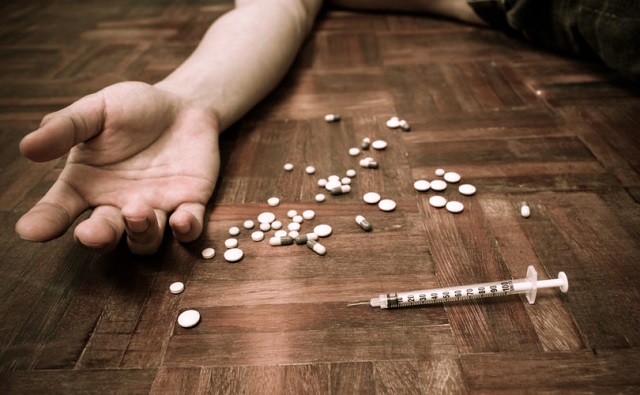Addictions
Fuelling addiction – The “safe supply” disaster

By Denise Denning
There is a growing schism in the Canadian addiction treatment community regarding safer supply.
[This article was originally published by the MacDonald Laurier Institute and has been syndicated with their permission]
As the death toll from the ongoing opioid poisoning crisis in Canada continues to rise, jurisdictions across the country struggle to find solutions. Safe consumption sites, where people can use drugs in a supervised setting that provides clean syringes and overdose kits, have opened across Canada. Addiction medicine clinics that provide treatments for drug use have proliferated nation-wide. Controversially, the Trudeau government has funded so-called “safer opioid supply” programs that provide powerful pharmaceutical opioids to people who use drugs with the presumption that they will use these in place of street drugs of unknown potency containing numerous and poorly understood toxic adulterants. But even though they lack those toxic adulterants, safer supply drugs are not safe. By virtue of the pharmacology inherent to all opioids, safer supply drugs may be increasing harm.
Unlike safe consumption sites, where people bring their own drugs and use them in a supervised environment, safer supply programs provide people who use opioids with up to 30 tablets per day of the powerful synthetic opioid hydromorphone to take away with them and use elsewhere without any supervision or proof that they are using the drugs themselves. “Safer supply services provide an alternative to the toxic illegal drug supply as a way to help prevent overdoses and can connect people to other health and social services,” touts Health Canada’s safer supply web page. Safer supply programs “build on existing approaches that provide medications to treat opioid use disorder” and these programs are “more flexible and do not necessarily focus on stopping drug use.”
Health Canada’s quietly optimistic tone is echoed and magnified by advocates and activists across the country, who insist that safer supply is “the most important intervention” to save the lives of people who use drugs and cite data suggesting that safer supply is a powerful harm reduction tool for helping people avoid the risks of exposure to sketchy street drugs. And the benefits of safer supply, proponents assert, go beyond saving people from overdose. Safer supply also protects people from the stigma associated with illicit drug use. “Overdose prevention measures that go beyond individual behaviour changes, including providing a safer supply of drugs and eliminating stigma, are paramount to mitigate harms,” asserts one review. “Increasing respectful treatment of people who use substances, and reducing stigma and trauma improves the health of communities,” a review of a drug checking service declares.
“Sociopolitical factors such as prohibition, stigma, and criminalization of people who use drugs have fuelled the current overdose crisis and toxic unregulated drug supply and limited the establishment and scale up of services for people who use drugs,” proclaims another paper promoting the benefits of safer supply.
Certainly, all of us working in addiction treatment agree that putting people in jail does not solve their drug use problems, and everyone should be able to access health care without concerns of being stigmatized. But suggesting that these factors have fuelled the current crisis is an assertion that not only lacks proof but also ignores the material reality of the pharmacology of these drugs and their impact on the human central nervous system.
There is a growing schism in the Canadian addiction treatment community regarding safer supply. Its opponents, who include prominent addiction medicine physicians across Canada, insist that none of the studies of safer supply consider the number of people in safer supply programs who sell or trade their safer supply drugs to buy fentanyl. They point out that the studies finding safer supply beneficial are too narrow in their scope because they only examine the benefits to the patients receiving the safer supply and do not consider diversion and its potential for harm by putting these drugs in the hands of people other than street drug users, such as youth, or people who have stopped using drugs.
In an article published by the Globe and Mail, addiction medicine physician and writer Dr. Vincent Lam wrote about how some of his patients are struggling with their addictions because the hydromorphone has become so cheap and readily available. “Patients of mine who were free of illicit opioids for years now struggle with hydromorphone, which they are buying from those to whom it is prescribed. One told me they prefer to sleep outside rather than in shelters, because they cannot avoid hydromorphone in the shelters. One who has never tried fentanyl – which hydromorphone is meant to protect them from – is injecting high doses of hydromorphone daily, struggling to get off, while their tolerance rapidly increases.”
Another critic of safer supply, Dr. Lori Regenstreif, has seen patients severely harmed when they crush and inject the tablets. “I’ve seen people become quadriplegic and paraplegic because the infection invaded their spinal cord and damaged their nervous system,” she said. And she called the studies in favour of safer supply “customer satisfaction surveys” that do not meet scientific standards of properly conducted research. For instance, a study that has been cited as powerful evidence for the effectiveness of safer supply did not control for patients using methadone or Suboxone, two well-established and effective treatments for opioid use disorder. At baseline, the control group and the study group were using these treatments at roughly the same rates. But the authors didn’t provide the number of participants using these treatments at the study’s end. So, the purported benefits of safer supply could have been from established treatments rather than safer supply.
A word about terminology: referring to these programs as “safer supply” is problematic because it implies that these programs are safe. Dr. Lori Regenstreif suggests the term “take home tablets” as a more neutral alternative that also describes exactly how these programs work. For the rest of this article, the term “take home tablets” or “prescribed opioids” will be used, only retaining “safer supply” in the previous paragraphs for the sake of clarity.
A review of 19 studies advocating for take home tablet programs found “no evidence demonstrating benefits.” For instance, only one of the studies recommended interventions that have been proven to address risk factors for addiction, even though all the studies found high rates of homelessness, unemployment, food insecurity, and other markers for poverty. And none of the studies investigated the implications of diversion, though there is increasing evidence that diversion is widespread. And a more recent review of these programs found that the “Safer Opioid Supply Policy” in British Columbia was associated with “a significant increase in opioid-related poisoning hospitalizations.”
The rhetoric is becoming increasingly heated and politicized. Supporters of take home tablet programs accuse its detractors of denying a potentially life-saving intervention to a vulnerable population of marginalized people. Critics, such as those discussed above, point to the paucity of good quality evidence and the plethora of potential harms from diversion. But what the discussion has been lacking is a consideration of how the pharmacology of these drugs should influence policies regarding the care provided to these marginalized and vulnerable people. Surely the way these drugs act in the human body should provide the underpinning for any evidence-based addiction management program.
Proponents of take home tablet programs will say, correctly, that opioids have been used for at least 3,000 years in the form of opium from Papaver somniferum, the poppy. Modern opioid pharmacology emerged out of the synthesis of morphine from opium in 1806. All opioids are derived from four compounds, including morphine, that are found in opium. Heroin is nothing more than morphine with a tweak to its molecule rendering it more fat soluble. Compared with water soluble substances, products that are fat soluble are better able to penetrate the blood brain barrier and enter the central nervous system. When heroin is injected, users experience a euphoric rush that they wouldn’t experience as intensely from injecting morphine, even though it’s almost the same drug as morphine, and within half an hour after injection, heroin is converted into morphine.
Stimulation of the opioid receptors by morphine and all its myriad opioid kin results in the classic effects of opioids such as pain relief, euphoria, sedation, respiratory depression, reduced heart rate, and a slowing of the gastrointestinal tract resulting in constipation. As the dosage is increased, respiration slows further, and patients sometimes experience nausea and vomiting. Depending on the dose taken and the person’s tolerance, increasing sedation may progress to coma and respiratory arrest. Opioids kill people by sedating them so deeply they stop breathing.
Subscribe for free to get Break The Needle’s latest news and analysis – or donate to our investigative journalism fund.
With chronic use, opioids cause adaptations in the body resulting in tolerance such that these habitual users require higher doses to achieve the same degree of euphoria. The flip side of tolerance is the withdrawal that happens when the person stops using and their autonomic nervous system goes into overdrive. The greater the tolerance, the worse the withdrawal, characterized by nausea and vomiting, diarrhea, muscle cramps, bone and joint aches, tremors, anxiety, goosebumps, sweating, restlessness. Opioid withdrawal isn’t generally fatal but may be if patients develop heart arrhythmias from electrolyte loss and autonomic overstimulation.
Tolerance and withdrawal are the evil twins of addiction. Addictive drugs have a rapid onset of action, produce a euphoriant effect, and have a short duration of action. The relative addictive potential of these drugs may be predicted by how much they adhere to these intersecting characteristics. For instance, morphine is less addictive than oxycodone, the active ingredient in OxyContin. Both morphine and oxycodone are rapid acting, produce euphoria, and have a short duration of action. Both may induce tolerance and withdrawal. But morphine gets metabolized to another substance that is more potent and sustains the opioid effect, and it accumulates if the person uses it every day. Morphine in effect has a longer duration of action compared with oxycodone, which has no active metabolites. A person who takes oxycodone will experience rapidly dropping blood levels as the drug is metabolized and excreted, leaving the user in withdrawal and craving more.
The manufacturers of the oxycodone product OxyContin infamously made a case for their product being less addictive because they formulated it into a long-acting dosage form that released the drug gradually over an 8-to-12-hour period. The story of OxyContin has been exhaustively covered elsewhere, and I won’t rehash it here. In brief: people quickly discovered that OxyContin’s sustained-release matrix could be easily defeated by chewing or crushing the tablets, thus releasing the drug all at once, and as knowledge of this hack spread, a growing public health crisis ensued, resulting in the destruction of communities, massive numbers of arrests as people seeking pain relief became criminalized by their addiction, and thousands of deaths across Canada and the United States.
The hydromorphone given to fentanyl users in safer supply programs is about five times stronger than morphine and four times stronger than oxycodone. It exerts its maximal effect in one to two hours and lasts for around three to four hours. In terms of relative addictiveness by virtue of its pharmacology, hydromorphone in theory would sit between heroin and fentanyl, though in a subset of a study called NAOMI, where people who use heroin were provided hydromorphone in place of heroin without their knowledge, none of the 25 participants could tell the difference.
Then there’s fentanyl. When injected, the onset of action for morphine and oxycodone is about 10 minutes. Injected fentanyl works almost immediately, and it is fat soluble, meaning that it can penetrate the blood-brain barrier and get into the brain with ease. The duration of action for morphine and oxycodone is similar, about 4 to 6 hours. Fentanyl’s duration of action is 30 to 60 minutes, maybe stretching to 2 hours if it’s injected intramuscularly rather than intravenously.
Fentanyl has a faster onset of action compared with other opioids, it produces a powerful euphoria by virtue of being about fifty times stronger than morphine, and its effects last about half as long at most. In other words, the public health disaster that has resulted from the widespread proliferation of fentanyl in the street drug supply could have been predicted from its pharmacology. Recall how people who use heroin could not distinguish it from hydromorphone. In contrast, fentanyl users prefer fentanyl because hydromorphone is not strong enough. There is increasing evidence, albeit anecdotal, that people who use fentanyl will sell their hydromorphone to other users reluctant to try the illicit drug supply. In turn, the pharmacology of these drugs predicts that those hydromorphone users may eventually transition to using fentanyl in search of a better high as their drug use continues and their opioid tolerance deepens.
Data published by Health Canada provides corroboration for this hypothesis. In 2016, fentanyl was implicated in 52 per cent of opioid toxicity deaths in Canada, while non-fentanyl opioids were present in 59 per cent of cases. By 2018, fentanyl and its analogues were present in 80 per cent of opioid toxicity deaths while non-fentanyl opioids had fallen to 46 per cent. As of 2024, fentanyl and its analogues were present in almost all opioid toxicity deaths while the prevalence of non-fentanyl opioids had fallen to 26 per cent.
If hydromorphone isn’t strong enough for fentanyl users, why not give them pharmaceutical fentanyl instead? But there are already stronger analogues of fentanyl, such as carfentanil, that are increasingly found when samples of illicit drugs are analyzed. A recent study discovered that 20 per cent of opioid-containing samples analyzed in Alberta in 2022 contained carfentanil. If drug dealers started losing customers to take home tablet programs (they currently are not), a potential arms race, where dealers increase the potency of their drugs to make them more attractive than legally available options, may result in an illicit drug supply of ever-increasing lethality. And what of the people who use these ultra-strong opioids? Obviously, more people will die. The potency of fentanyl means that people who use it find stopping using profoundly challenging. People working in addiction treatment struggle to help patients who are experiencing the worst withdrawal any of us have ever seen. If ultra-strong opioids dwarfing fentanyl in potency become predominant in the illicit drug supply, the people who survive using these drugs may be predicted to experience a withdrawal syndrome that approaches the limits of human misery.
And therein lies the harm of these drugs. Whether or not they are criminalized; whether people can freely access them, opioids are potent drugs with many significant side effects and long-term negative effects that worsen over time. People who use legitimately acquired opioids for therapeutic reasons struggle with chronic constipation, cognitive impairment, an increased risk of falls, paradoxical increased sensitivity to pain known as “opioid-induced hyperalgia,” and an ongoing risk of experiencing withdrawal if they are unable to access their medications. All drugs should be used in the context of balancing risks versus benefits, where the harms caused by side effects are balanced against the therapeutic benefits. Like pharmacologists David Juurlink and Matthew Herder said, “Put simply, high-dose opioids constitute a self-perpetuating therapy, with patients left vulnerable by the need for ongoing treatment to avoid withdrawal, itself a pernicious, drug-related harm.”
Comprehensive treatment aimed at recovery is the path forward
These problems are complex and multifaceted, involving intersecting domains of public health, law enforcement, and health care. My main objection to take home tablet programs, apart from the public health disaster to which these programs contribute, is the abandonment of the principle of eventual sobriety for people who use drugs. By giving people the drugs they want, we are giving up on the possibility of a better quality of life for a marginalized population of people, many of whom are self-medicating to deal with trauma that otherwise has been left unaddressed. Addiction is a chronic and long-standing condition marked by relapses. The main risk factors for addiction are mental illness and trauma. In particular, childhood abuse puts people at a magnified risk of having a substance use disorder as an adult. Women who engage in prostitution and use illicit drugs are more likely to have been sexually abused before the age of 15. These are traumatized people who are self-medicating to deal with psychological pain.
The key is to provide comprehensive treatment that aims at full recovery, but in a gradual way that makes use of gradated treatment pathways. This means that a prescribed supply of high potency opioids may be a useful tool for some people in their complex and long-standing journey to sobriety, if used as an adjunct to other treatments and supports. To minimize the risk of diversion, prescribers may use treatment agreements, documents that patients sign where they agree to take their medication as prescribed and not divert it, and submit urine drug screens if requested. But to offer take home tablets in the absence of evidence-based addiction treatment modalities and other psychosocial supports only serves to abandon people to ongoing severe intractable high potency opioid use.
What works for people caught in a web of seemingly intractable severe addiction? The two main treatment paradigms in addiction medicine have traditionally been abstinence-based programs such as the 12-step programs popularized by Alcoholics Anonymous, and harm reduction programs such as methadone maintenance treatment. Abstinence-based programs, as the name suggests, are defined by the all-or-nothing goal of total sobriety. These programs are attractive because of their “Kids, don’t do drugs” simplicity. But this simplicity is deceptive because addiction is complex, and these programs have been found not to work for most people. For instance, abstinence-based programs will frequently kick people out of treatment for using drugs, thus punishing them for the problems that motivated them to seek treatment in the first place. The focus on abstinence means that they minimize the reality that the journey to sobriety is punctuated by relapses. Current Canadian guidelines for the treatment of opioid use disorder warn against simple cessation of drug use without follow up because of the significant risk of overdose. When people stop using opioids, their tolerance wanes. If they relapse and use their former dose, they may suffer a fatal overdose.
The harm reduction treatment paradigm emerged out of the limitations of strict abstinence-based programs that eject patients who lapse, and that don’t offer gradated treatment pathways to gradually get patients to full recovery. Harm reduction accepts drug use with the overall goal, as the name suggests, of reducing the harms associated with using illicit drugs and retaining contact with those patients unwilling or unable to stop all drug use.
Harm reduction in the form of medication assisted treatments such as methadone, Suboxone and Sublocade has been the gold standard of opioid addiction treatment, effective in not only reducing illicit opioid use but also proven to reduce overdose risk, criminal behaviour, risky sexual behaviour, and the transmission of blood-borne infections propagated by needle sharing. Medication assisted treatments are also found improve people’s lives in the domains of social determinants of health, such as going back to school, finding employment, and regaining custody of children. And these programs have been proven to save lives, reducing mortality from overdose, suicide, alcohol, and even from causes one would not intuitively associate with drug use, such as cancer and cardiovascular disease. Medication assisted treatments are a resoundingly science-based harm reduction modality and should be the treatments of first choice offered to this vulnerable population.
But harm reduction is just one of the four pillars of addiction recovery. Harm reduction by itself saves lives, but it doesn’t help people move forwards towards sobriety. The other three pillars of addiction recovery are prevention, treatment, and enforcement. Prevention addresses the risk factors for addiction and involves treatment for mental illnesses and proper, more comprehensive pain management treatment plans that go beyond just prescribing painkillers. Enforcement means preventing these drugs or their precursors from entering Canada or prosecuting those who sell illicit drugs. And treatment for people who use drugs must involve not only just harm reduction, but also a comprehensive range of services such as housing supports, counselling and other psychosocial services, and employment support.
Take home tablet programs are based on two presumptions: firstly, that people receiving these drugs will use them in place of street drugs and not just sell them to buy street drugs, as they do; and secondly, that opioids are safe to take as long as the dose is not excessive. Given that these two presumptions are false, the only conclusion we can reach is that take home tablet programs do not reduce harm, but increase it. I concede that providing people with legally sourced opioids reduces their risk of criminal prosecution, and there is a reduction in stigma when you give people what they want without judgment, but this is a false dichotomy – you can achieve reductions in prosecution with better treatment, rather than supporting objectively harmful behaviour in the name of destigmatization. At the end of the day, stigma doesn’t kill people – bad drugs do, and providing people who use drugs with the wraparound supportive services that they need and have been shown to work is more complex, and probably more expensive. But complex problems are rarely solved by simple solutions.
Denise Denning is a correctional pharmacist with background in addiction treatment. After graduating from the University of Toronto Faculty of Pharmacy, Denning completed a specialized residency in the treatment of drug and alcohol use at the Addiction Research Foundation in Toronto (now CAMH). She worked as the pharmacist at the Toronto Jail for 17 years, and the pharmacy manager at the Toronto South Detention Centre for 8 years, where she provided clinical advice on the management of patients with opioid use disorder and supervised the preparation of methadone doses. She also worked part time for four years at a pharmacy providing mostly methadone in downtown Toronto. Currently, she is the provincial pharmacy manager for the Ontario Ministry of the Solicitor General, where she provides guidance on medication related policies and procedures for that province’s correctional facilities.
Subscribe to Break The Needle. Our content is always free – but if you want to help us commission more high-quality journalism, consider getting a voluntary paid subscription.
Addictions
More young men want to restrict pornography: survey

From LifeSiteNews
Nearly 64% of American men now believe online pornography should be more difficult to access, with even higher numbers of women saying the same thing.
A new survey has shown that an increasing number of young men want more restrictions on online pornography.
According to a survey by the American Enterprise Institute’s Survey Center on American Life, nearly 7 in 10 (69 percent) of Americans support the idea of making online pornography less accessible. In 2013, 65 percent expressed support for policies restricting internet pornography.
The most substantial increase in the support for restrictive measures on pornography could be observed in young men (age 18-24). In 2013, about half of young men favored restrictions, while 40 percent actively opposed such policies. In 2025, 64 percent of men believe accessing online pornography should be made more difficult.
The largest support for restriction on internet pornography overall could be measured among older men (65+), where 73 percent favored restrictions. An even larger percentage of women in each age group supported making online pornography less accessible. Seventy-two percent of young women (age 18-24) favored restriction, while 87 percent of women 55 years or older expressed support for less accessibility of internet pornography.
Viewing pornography is highly addictive and can lead to serious health problems. Studies have shown that children often have their first encounter with pornography at around 12 years old, with boys having a lower average age of about 10-11, and some encountering online pornography as young as 8. Studies have also shown that viewing pornography regularly rewires humans brains and that children, adolescents, and younger men are especially at risk for becoming addicted to online pornography.
According to Gary Wilson’s landmark book on the matter, “Your Brain on Porn,” pornography addiction frequently leads to problems like destruction of genuine intimate relationships, difficulty forming and maintaining real bonds in relationship, depression, social anxiety, as well as reduction of gray matter, leading to desensitization and diminished pleasure from everyday activities among many others.
Addictions
Can addiction be predicted—and prevented?

These four personality traits are predictive of addiction. A new program is using this knowledge to prevent addiction from ever developing
In classrooms across Canada, addiction prevention is getting personal.
Instead of warning students about the dangers of drugs, a program called PreVenture teaches students about themselves — and it’s working.
Developed by Canadian clinical psychologist Patricia Conrod, PreVenture helps young people recognize how traits like risk-taking or negative thinking shape their reactions to stress.
“When you intervene around these traits and help people learn new cognitive behavioural strategies to manage these traits, you are able to reduce their substance use,” said Conrod, who is also a professor at the Université de Montréal.
By tailoring addiction prevention strategies to individual personality profiles, the program is changing how we think about addiction — from something we react to, to something we might stop before it starts.
And now, scientists say the potential for early intervention is going even deeper — down to our genes.
Personality and addiction
PreVenture is a personality-targeted prevention program that helps young people understand and manage traits linked to a higher propensity for future substance use.
The program focuses on four core traits — anxiety sensitivity, sensation seeking, impulsivity and hopelessness — that shape how individuals experience the world and respond to stress, social situations and emotional challenges.
“They don’t only predict who’s at risk,” said Conrod in an interview with Canadian Affairs. “They predict what you’re at risk for with quite a lot of specificity.”
Anxiety sensitivity shows up in people who feel overwhelmed by physical symptoms like a racing heart or dizziness. People with this trait may ultimately turn to alcohol, benzodiazepines such as Xanax, or opioids to calm their bodies.
Sensation seeking is characterized by a desire for excitement and novel experiences. This trait is associated with a higher likelihood of being drawn to substances like cannabis, MDMA, psilocybin or other hallucinogens.
“[Cannabis] alters their perceptual experiences, and so makes things feel more novel,” said Conrod.
Sensation seeking is also associated with binge drinking or use of stimulants such as cocaine.
The trait of impulsivity involves difficulty controlling urges and delaying gratification. This trait is associated with a higher likelihood of engaging in risky behaviours and an increased risk of addiction to a broad range of substances.
“Young people with attentional problems and a core difficulty with response inhibition have a hard time putting a stop on a behaviour once they’ve initiated it,” said Conrod.
Finally, the trait of hopelessness is tied to a pessimistic, self-critical mindset. People with this trait often expect rejection or assume others are hostile, so they may use alcohol or opioids to dull emotional pain.
“We call it negative attributional style,” said Conrod. “They have come to believe that the world is against them, and they need to protect themselves.”
These traits also cluster into two broader categories — internalizing and externalizing.
Anxiety sensitivity and hopelessness direct distress inward, while sensation seeking and impulsivity are characterized by outward disinhibition.
“These traits change your perception,” said Conrod. “You see the world differently through these traits.”
Conrod also notes that these traits appear across cultures, making targeted addiction prevention broadly applicable.
Personality-based prevention
Unlike most one-size-fits-all drug prevention programs, PreVenture tailors its prevention strategies for each individual trait category to reduce substance use risk.
The program uses a brief personality assessment tool to identify students’ dominant traits. It then delivers cognitive-behavioural strategies to help users manage stress, emotions and risky behaviours associated with them.

Recreation of the personality assessment tool based on the substance use risk profile scale — a scale measuring traits linked to reinforcement-specific substance use profiles. | Alexandra Keeler
Students learn to recognize how their dominant trait influences their thoughts and reactions — and how to shift those patterns in healthier directions.
“We’re trying to raise awareness to young people about how these traits are influencing their automatic thinking,” said Conrod. “You’re having them be a little more critical of their thoughts.”
Hopelessness is addressed by teaching strategies to challenge depressive thoughts; those high in sensation seeking explore safer ways to satisfy their need for stimulation; anxiety sensitivity is managed through calming techniques; and impulsivity is reduced by practicing pausing before acting.
Crucially, the program emphasizes the strengths of each trait as well.
“We try to present [traits] in a more positive way, not just a negative way,” said Sherry Stewart, a clinical psychologist at Dalhousie University who collaborates with Conrod.
“Your personality gets you into trouble — certainly, we discuss that — but also, what are the strengths of your personality?”
While a main goal of the program is preventing substance use disorders, the program barely discusses substances.
“You don’t really have to talk about substances very much,” said Conrod. “You talk more about how you’re managing the trait, and it has this direct impact on someone’s motivation to use, as well as how severely they experience mental health symptoms.”
The workshops make it clear, however, that while substances may offer temporary relief, they often worsen the very symptoms participants are trying to manage.
The genetic angle
Catherine Brownstein, a Harvard Medical School professor and geneticist at Boston Children’s Hospital, says genetic factors also help explain why some people are more vulnerable to addiction.
“A lot of personality is genetic,” she said in an interview with Canadian Affairs.
Her research has identified 47 locations in human DNA that affect brain development and shape personality traits.
While substance use risk cannot yet be detected genetically, certain gene variants — like SHANK3, NRXN1 and CRY1 — are linked to psychiatric disorders that often co-occur with substance use, including ADHD and schizophrenia.
Brownstein also says genetic variations influence pain perception.
Some variants increase pain sensitivity, while others eliminate it altogether. One such gene, SCN9A, may make individuals more likely to seek opioids for relief.
“If you’re in pain all the time, you want it to stop, and opioids are effective,” said Brownstein.
While we cannot yet predict addiction risk from genetics alone, Brownstein says she thinks genetic screening combined with psychological profiling could one day personalize prevention even further.
Expansion and challenges
Conrod’s personality-targeted intervention program, PreVenture, has proven highly effective.
A five-year study published in January found that students who participated in PreVenture workshops were 23 to 80 per cent less likely to develop substance use disorders by Grade 11.
Stewart says that the concept of PreVenture began with adults with substance use disorders, but research suggests earlier intervention can alter life trajectories. That insight has driven PreVenture’s expansion to younger age groups.
Conrod’s team delivers PreVenture to middle and high school students, UniVenture to university students and OpiVenture to adults in treatment for opioid dependence.
PreVenture has been implemented in schools across the U.S. and Canada, including in B.C., Ontario, Quebec, Nova Scotia and Newfoundland and Labrador. Five Canadian universities are participating in the UniVenture study.
However, currently, Canada’s flagship youth prevention strategy is based on the Icelandic Prevention Model — a 1990s framework that aims to reduce youth substance use by focusing on environmental factors such as family, school and peer influence.
While the Icelandic Prevention Model has shown success in Iceland, it has serious limitations. It lacks a mental health component, does not specifically address opioid use and has demonstrated mixed results by gender.
Despite strong evidence for personality-targeted prevention, programs like PreVenture remain underused.
Conrod says education systems often default to less effective, generic methods like one-off guest speakers. She also cites staffing shortages and burnout in schools, along with insufficient mental health services, as major barriers to implementing a new program.
Still, momentum is building.
B.C. has aligned their prevention services with the PreVenture model. And organizations such as the youth wellness networks Foundry B.C. and Youth Wellness Hubs Ontario are offering the program and expanding its reach.
Conrod believes the power of the program lies in helping young people feel seen and understood.
“It’s really important that a young person is provided with the space and focus to recognize what’s unique about [their] particular trait,” she said.
“Recognize that there are other people in the world that also think this way [and tell them] you’re not going crazy.”
This article was produced through the Breaking Needles Fellowship Program, which provided a grant to Canadian Affairs, a digital media outlet, to fund journalism exploring addiction and crime in Canada. Articles produced through the Fellowship are co-published by Break The Needle and Canadian Affairs.
-

 Business2 days ago
Business2 days agoWEF-linked Linda Yaccarino to step down as CEO of X
-

 Automotive2 days ago
Automotive2 days agoAmerica’s EV Industry Must Now Compete On A Level Playing Field
-

 Business2 days ago
Business2 days ago‘Experts’ Warned Free Markets Would Ruin Argentina — Looks Like They Were Dead Wrong
-

 Alberta1 day ago
Alberta1 day agoAlberta school boards required to meet new standards for school library materials with regard to sexual content
-

 International2 days ago
International2 days agoSecret Service suspends six agents nearly a year after Trump assassination attempt
-

 Business1 day ago
Business1 day agoCarney government should recognize that private sector drives Canada’s economy
-

 Bruce Dowbiggin1 day ago
Bruce Dowbiggin1 day agoThe Covid 19 Disaster: When Do We Get The Apologies?
-

 Alberta1 day ago
Alberta1 day agoFourteen regional advisory councils will shape health care planning and delivery in Alberta








